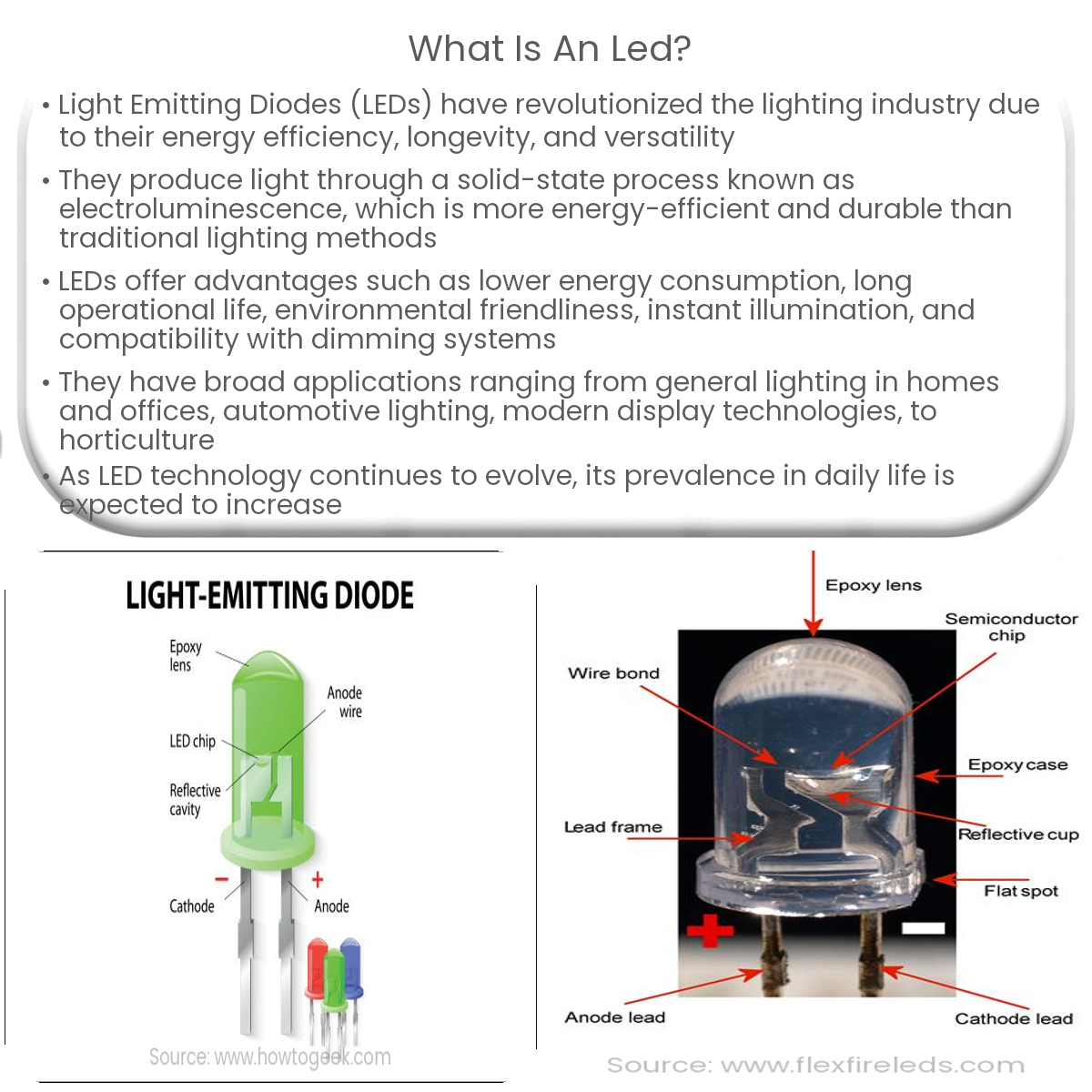An LED (Light Emitting Diode) is a semiconductor device that emits light when an electric current passes through it, offering energy-efficient and versatile illumination.
Introduction to LEDs
Light Emitting Diodes, commonly known as LEDs, are semiconductor devices that emit light when an electric current passes through them. LEDs have revolutionized the lighting industry due to their efficiency, longevity, and versatility. This article will provide an overview of LED technology and its numerous applications.
How LEDs Work
LEDs are made from semiconductor materials that have specific properties to facilitate the flow of electrons. When a voltage is applied across an LED, electrons in the semiconductor material recombine with electron holes, releasing energy in the form of photons. This process, known as electroluminescence, results in the emission of light.
Unlike incandescent bulbs, which generate light through the heating of a filament, LEDs produce light through a solid-state process. This makes them more energy-efficient and longer-lasting than traditional light sources.
Advantages of LEDs
LEDs offer numerous advantages over conventional lighting technologies, such as:
- Energy Efficiency: LEDs use less energy to produce the same amount of light as incandescent and fluorescent bulbs, resulting in lower energy consumption and reduced utility bills.
- Long Lifespan: LEDs have a longer operational life, often lasting tens of thousands of hours before needing replacement, reducing maintenance costs and waste.
- Environmentally Friendly: LEDs contain no hazardous materials, such as mercury found in compact fluorescent lamps (CFLs), and produce less heat, reducing the carbon footprint of lighting systems.
- Instant On: LEDs turn on instantly without any warm-up time, providing immediate illumination.
- Dimmable: Many LED lights are compatible with dimming systems, allowing for precise control of light levels and energy usage.
Applications of LEDs
Due to their numerous benefits, LEDs have found applications in various sectors:
- General Lighting: LEDs are widely used in residential, commercial, and industrial spaces for general illumination, replacing incandescent and fluorescent bulbs.
- Automotive Lighting: LEDs are commonly used in vehicles for headlights, taillights, and interior lighting due to their efficiency and design flexibility.
- Displays: LEDs serve as the basis for modern display technologies, such as LED TVs and digital billboards, providing bright, high-resolution images.
- Indicators and Signage: LEDs are ideal for indicator lights on electronic devices and traffic signals due to their long life and visibility.
- Horticulture: Specialized LED grow lights provide optimized wavelengths for plant growth, enabling efficient indoor farming and controlled environments.
In conclusion, LEDs are energy-efficient, long-lasting, and versatile light sources that have transformed the lighting industry. They offer numerous advantages over traditional lighting technologies and have found widespread applications in various sectors, from general illumination to automotive lighting and digital displays. As LED technology continues to advance, it is expected to play an increasingly prominent role in our daily lives.


